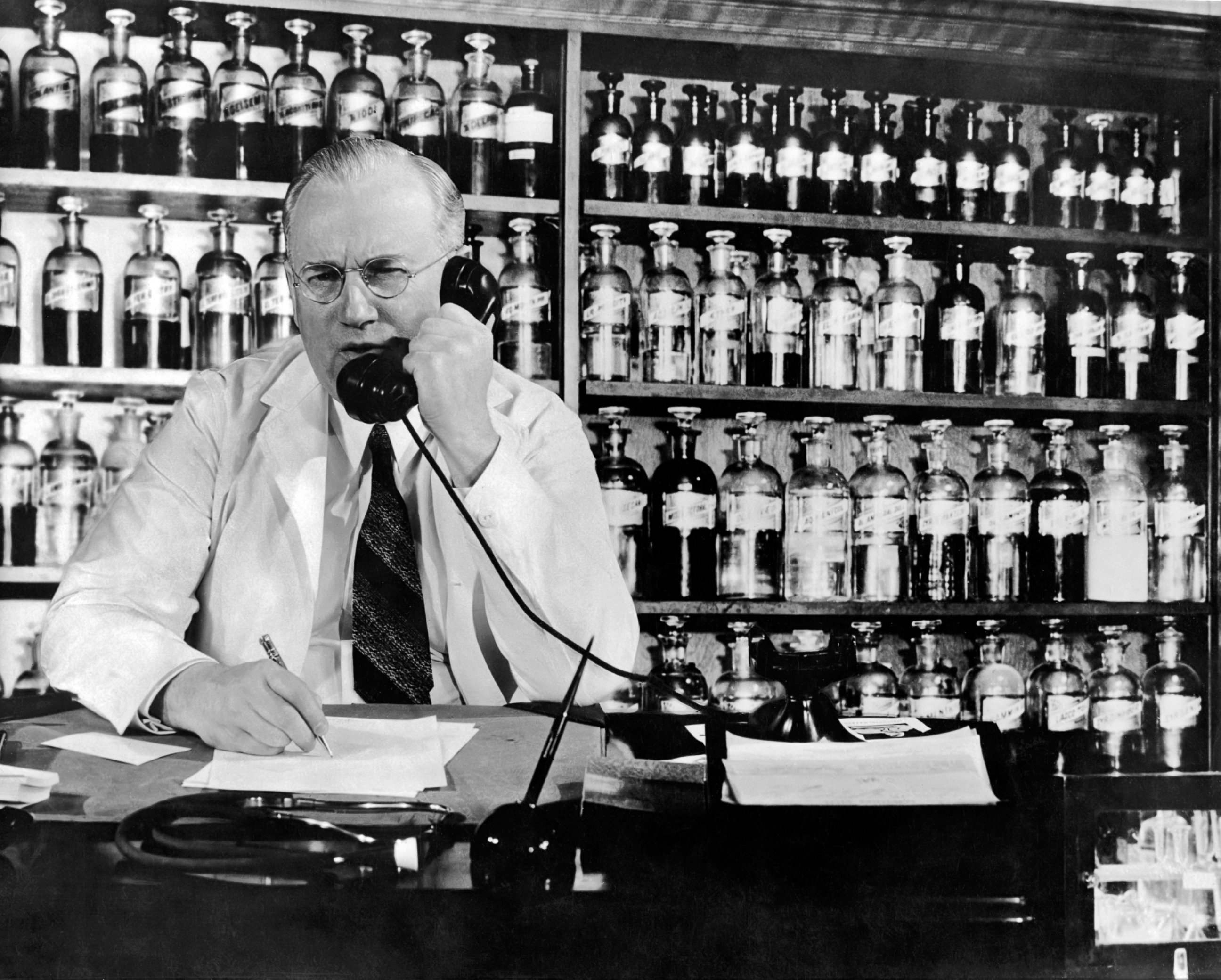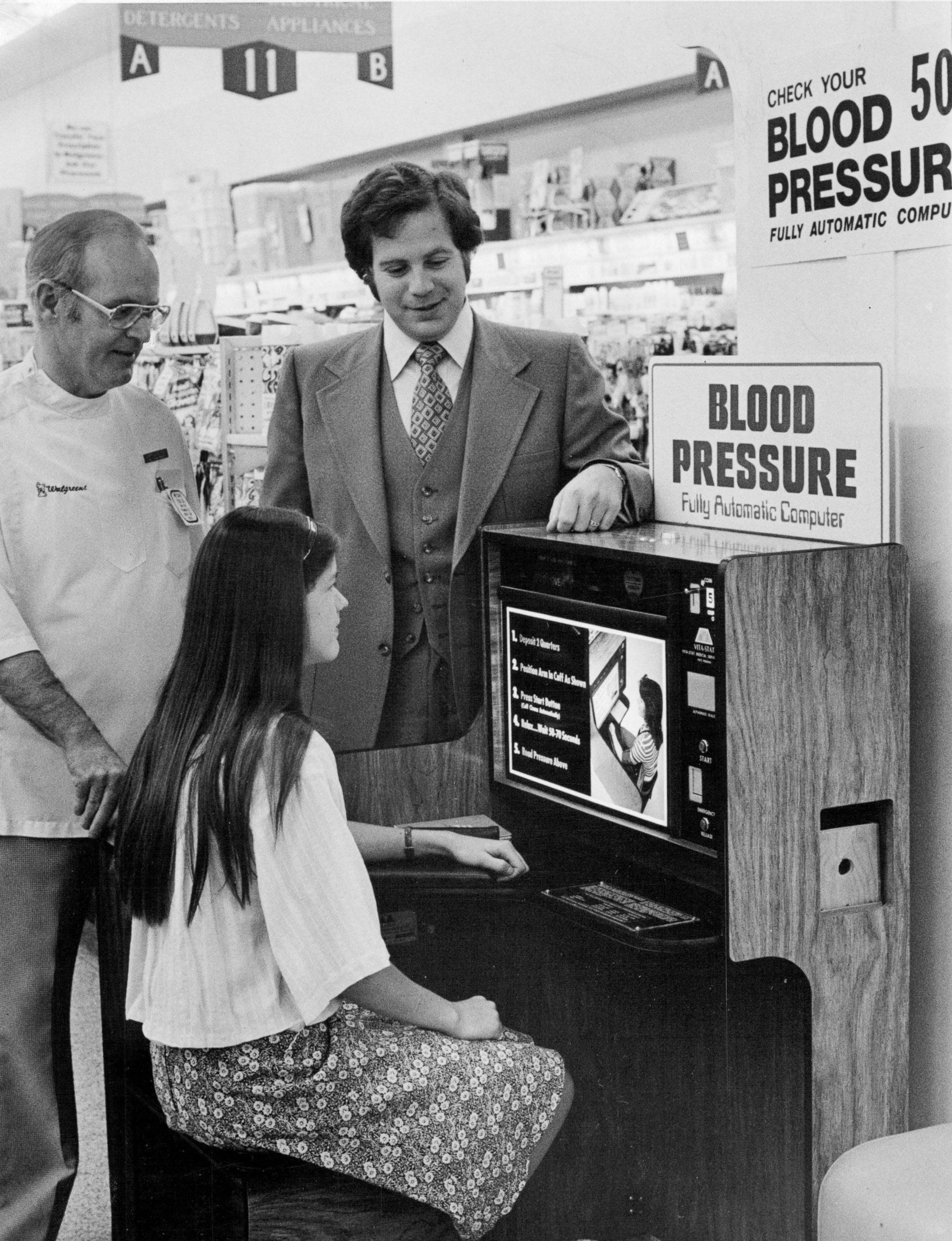What Pharmacies Looked Like Before Giant Corporate Mergers Like Walgreens-Rite Aid
Here's how pharmacies went from selling medicine to soda fountains to makeup.
— -- Before Walgreens announced that it was acquiring Rite Aid in a deal worth around $17.2 billion, creating more than 12,800 locations that will overtake giant CVS, pharmacies were different operations.
The acquisition announced Tuesday creates the nation's largest retail drugstore chain. The move follows Walgreens' acquisition of Alliance Boots in December. Walgreens and Rite Aid claim it will cut business costs by $1 billion.
In the bygone days, pharmacies weren't a one-stop shop for everything from groceries to holiday gifts. Walgreens was a neighborhood drugstore in Chicago founded in 1901 that measured 50 feet by 20 feet, according to the company website.
Charles R. Walgreen, Sr. gained experience from the age of 16 working at Horton's Drugstore and was paid $4 a week. He became a registered pharmacist in 1897. When he opened his own pharmacy in Barrett's Hotel on Chicago's South Side, "Aisles were widened, creating a spacious, airy, welcoming feeling -- a far cry from the cramped interiors of other drugstores. The selection of merchandise was improved and broadened, including pots and pans (unheard of in a drugstore!) at the bargain price of 15¢ a piece," Walgreens' website states.

By 1910, there were two Walgreen stores. But the company needed a way to outshine competitors.
"Over the preceding 100 years, the soda fountain had become key to virtually every American drugstore," according to the Walgreens website. "Beginning in the early 19th century, bottled soda water, and later charged soda water, were considered important health aids, making it a natural fixture in drugstores. To dispense the icy-cold, charged water, a tin pipe and spigot were attached. Soon, flavored syrups were added to the fizzy water and still later, ice cream added to that. As sodas grew in popularity, so the 'soda fountain' grew in beauty, ornamentation and importance as a revenue source to the drugstore."

Today, drugstores are competing to offer everything from makeup to medicine. Often, the convenience of a drugstore can trump competitive prices. Drugstores charge 38 percent more than mass merchants for cosmetics, food and flu and pain medicine, according to an analysis by Bloomberg Intelligence over the summer.
A Walgreens-Rite Aid merger could result in lower retail prices for non-prescription merchandise, according to Jennifer Bartashus, retail staples analyst with Bloomberg Intelligence.
It's possible that the combination of Walgreens and Rite Aid may provide lower prices to customers, as many mergers get better purchasing terms as a larger organization, Bartashus said.
"Don't expect prices to go as low as competitors such as some grocery stores, Wal-Mart or Target," she said. "People buy items in drug stores for convenience and for specialty items not available elsewhere, so they are willing to pay a premium for them."




